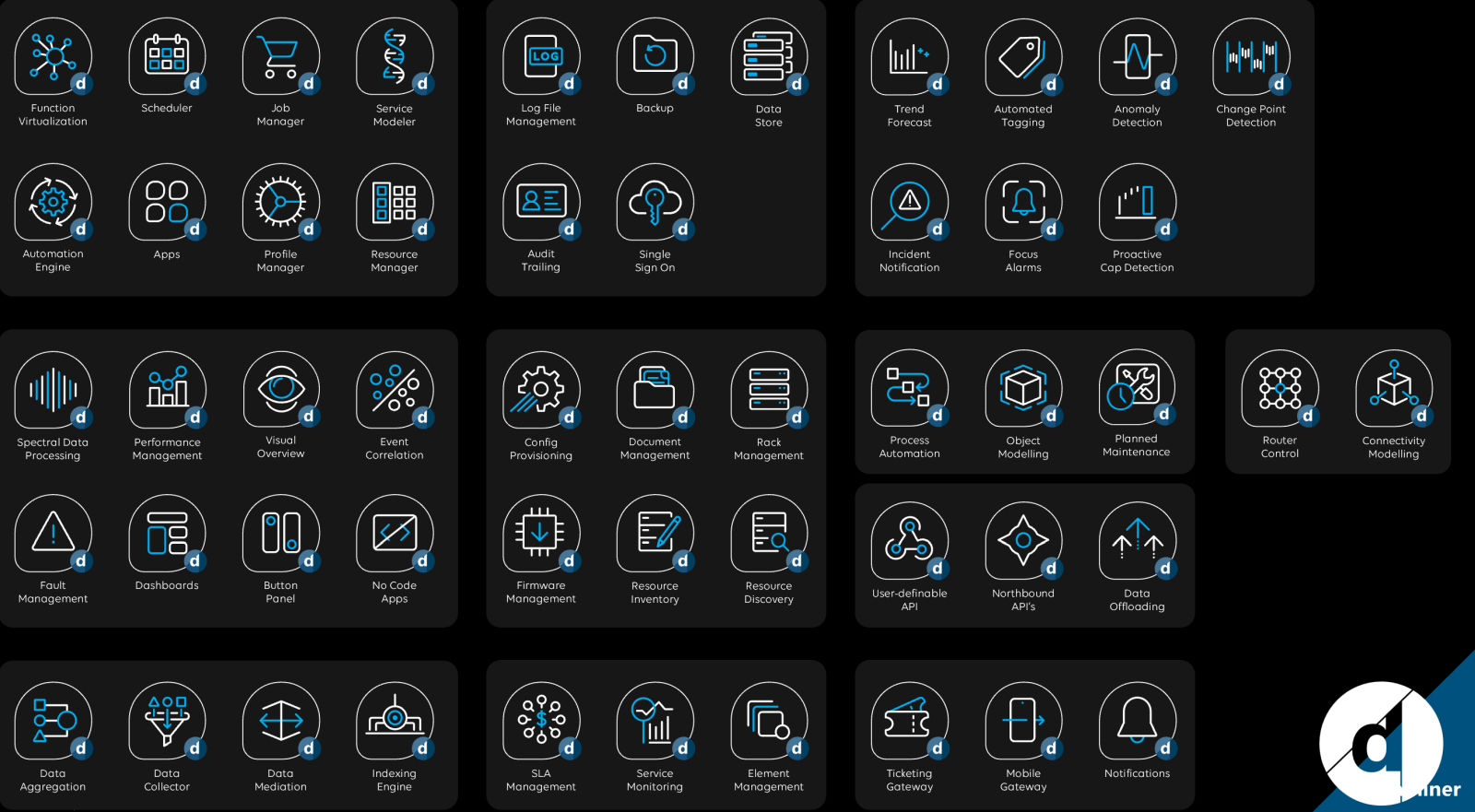DataMiner stack functions
A modular architecture allows for customization of modules and the addition of new functionality as needed, without complex integrations or upgrades. This flexibility enables operators to build a platform that meets their unique needs and expand it to support new services or technologies.
DataMiner functions are the foundation of your data-driven operation. They make it easy to create powerful solutions by cherry-picking the building blocks you need. Plus, their modular architecture lets you build a scalable operation and integrate with third-party applications and services. This gives you the flexibility to create better, faster, and cheaper solutions.
So, what exactly are those stack functions?

The DataMiner stack functions, represented as a "modular toolbox" in the illustration above, offer unparalleled flexibility, allowing you to cherry-pick the ideal combination for your ICT workflows and build highly automated operations, empowering your business to thrive in the digital age. These functions serve as your building blocks for digital transformation, enabling you to create the perfect solution for your challenges.
This collection of functions , which you can pick and choose according to your preference, is grouped in several categories, based on a shared value:
The Orchestration category offers powerful automation and orchestration functions, to maximize efficiency.
The Data Management category offers functions to easily manage, protect, and enrich your data flows.
The Augmented Operations category leverages big data and AI to ensure maximum uptime.
The Data Visualization category converts bits and bytes into uncluttered dashboards and easy control panels.
The Infrastructure Discovery & Provisioning category offers functions to manage and automate all your network implementation workflows.
The DataMiner Object Models (DOM) category offers functions to enrich your operations with administrative and business-related data.
The Open Framework category enables easy and secure integration with data from any source or system.
The Data Connectivity category offers functions to configure and visualize signal paths throughout your infrastructure.
The Data Aggregation category offers functions to merge complex data streams into actionable insights.
The Service Management category offers functions to reduce operational expenses and ensure that business stakes are always taken into account.
The Third-Party Integrations category allows you to work more efficiently by using the tools you already know and love.